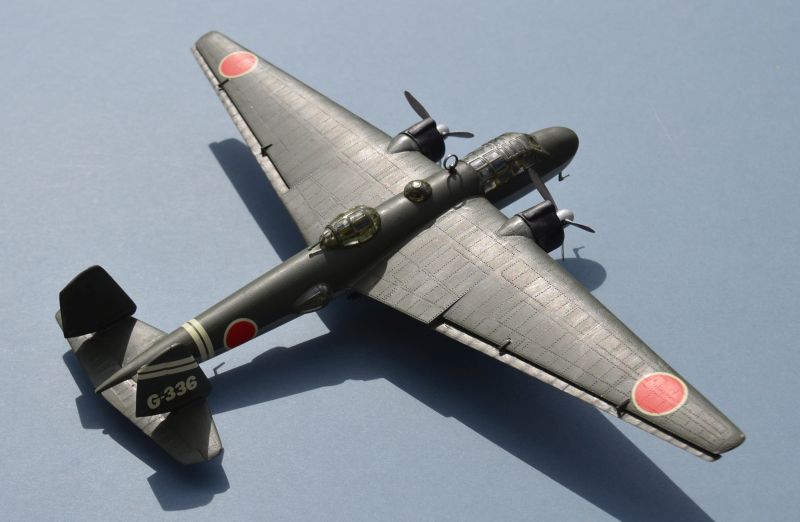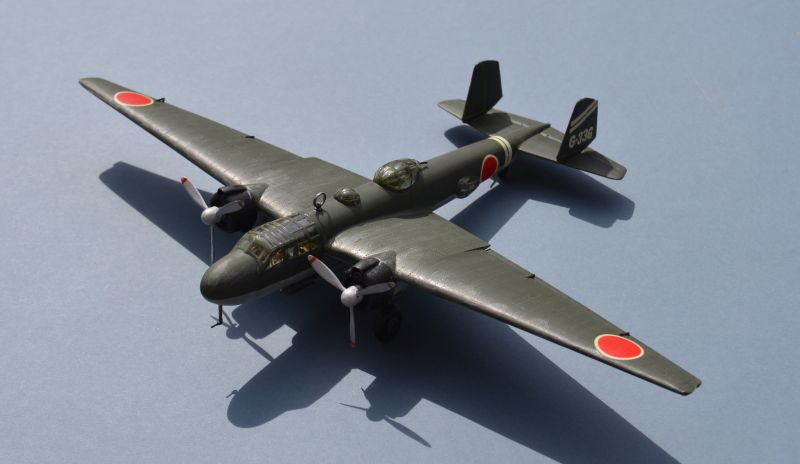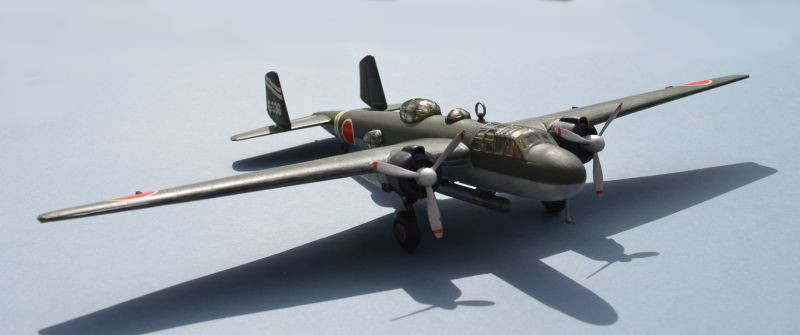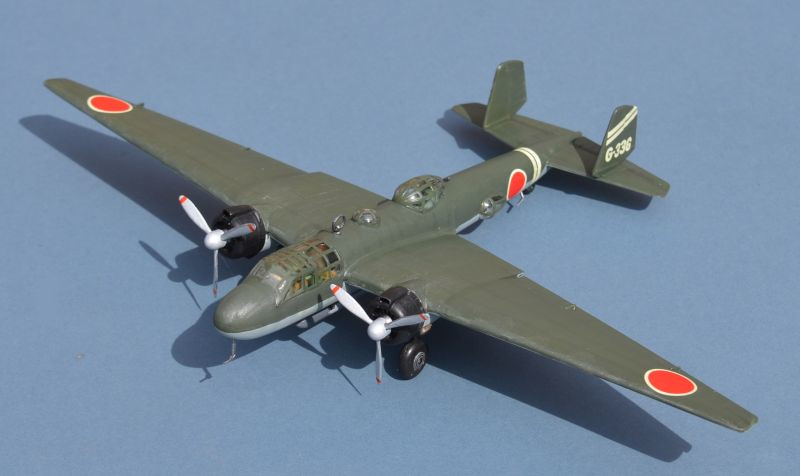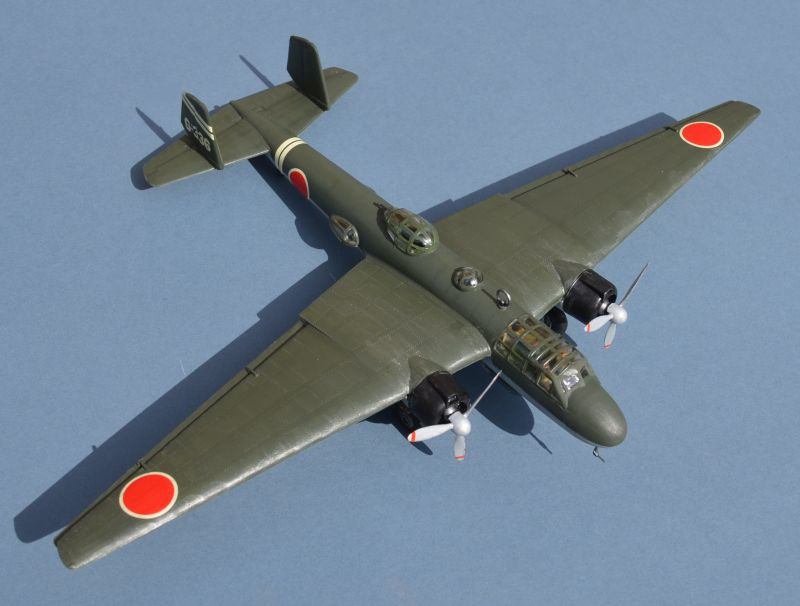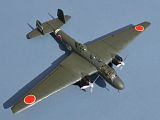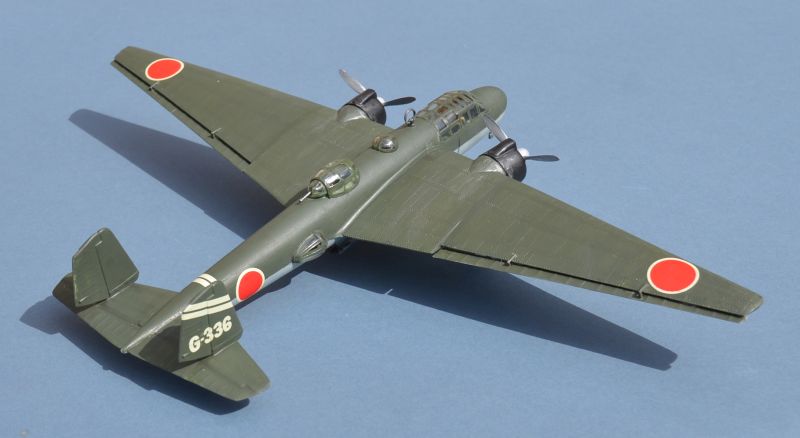June 2022
Mitsubishi G3M3 Type 96 “Rikko”
Mitsubishi G3M3 Type 96 Rikko
Allied Reporting name “Nell”
Genzan Air Group, Saigon, 10 December 1941
Arii 1/72 .
© www.gengriz.co.uk
The Mitsubishi G3M was developed in the mid 1930s as a very long range maritime attack aircraft. With a range of over 3,300 nautical miles at high speed (258mph), it was well ahead of contemporary European and US aircraft, coming as an unpleasant surprise when first encountered in 1941, by which time it was already being replaced in Japanese Navy service.
With a full title of Mitsubishi G3M Type 96 Land-
Building the Arii G3M Nell Kit:
So far as I am aware, this is the only Arii kit I have ever built.
Scalemates tells me that it was first issued in 1966 by LS, but despite this antiquity
it remains a very high quality moulding, albeit with very limited detail. I paid
£15 on e-
Parts fit is superb and the interestingly recessed surface rivet detail works well, being reminiscent of modern Trumpeter kits. Detail on specific items such as the torpedo and bombs is good. I have no way of knowing if the surface detail and lines are in the correct places, but nevertheless, it leaves a good looking effect.
The box is worthy of a mention too; it looks expensive, with an excellent painting of the aircraft in action and it is commendably compact, similar in size to say an Arma Wildcat, yet the kit that builds from it is actually quite large !
Build sequence is normal with no difficult areas, helped by the accurate fit and
a clear application of Japanese Toyota-
Given the basic cockpit, I added a little sidewall and floor detail, a bulkhead, several pressure cylinders, a radio and a chart table. Three rather malnourished looking crew members are provided, with good representation of the signature Imperial Japanese Navy Kapok life vests. The instructions suggest they all fit in the cockpit (where there are 3 seats), but one of the figures is actually too tall for this (he is perhaps intended for the gun turret). I cropped his legs so he could sit at my chart table ! The distinctive outward splayed engines look slightly overdone to me; the plan drawing in my copy of Francillon's "Japanese Aircraft of the Pacific War" has a noticeable splay, but not as much as the kit. There are also a few spare solid and clear parts in the box, probably for the early G3M1 and L3M1 transport variants.
The kit is advertised as a G3M3 Model 23, which would make it a later Nakajima-
This is an old kit and clearly so, but its original high quality is obvious and it is pleasant to build, with plenty of opportunity for the modeller to add their own individual additional details.
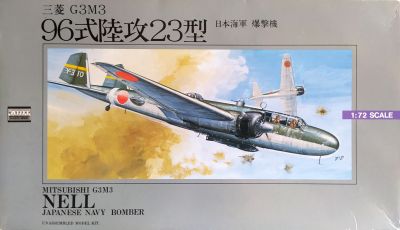
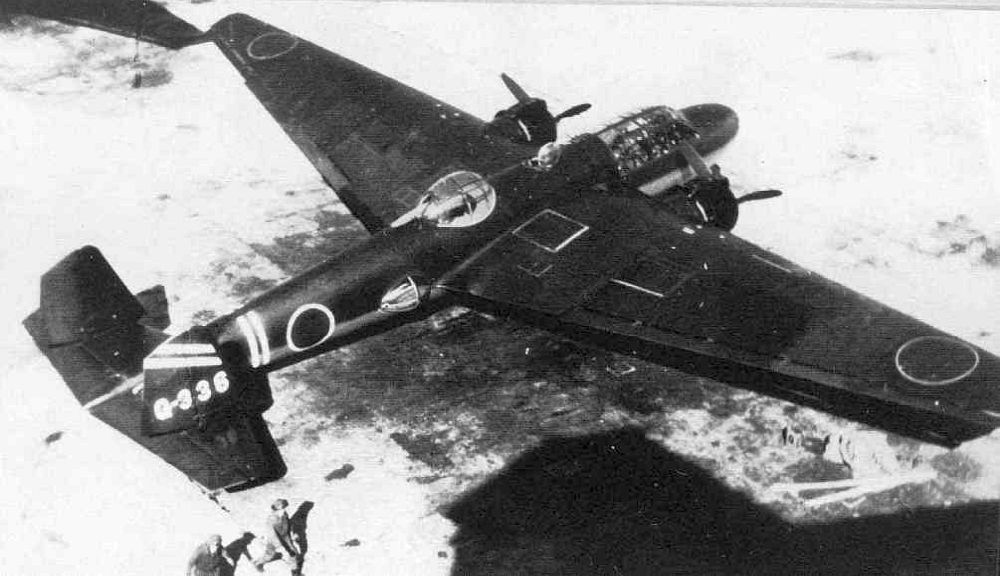
The subject of this model -
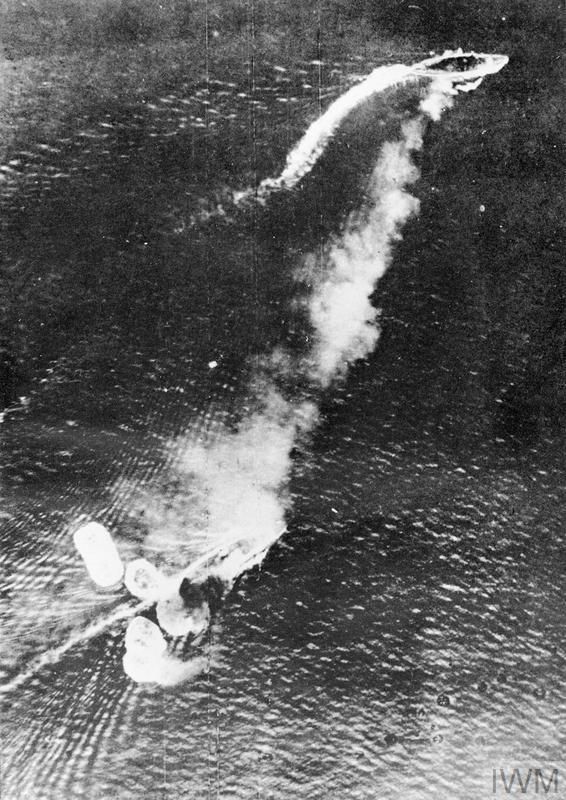
Left: A Japanese aerial photograph showing HMS PRINCE OF WALES (top) and HMS REPULSE during the early stages of the attack in which they were sunk. HMS REPULSE had just been hit for the first time (12.20 hours).
© IWM HU 2763
The morning after the battle, Prime Minister Winston Churchill received a phone call at his bedside from Admiral Sir Dudley Pound, the First Sea Lord.
Pound: Prime Minister, I have to report to you that the Prince of Wales and the Repulse have both been sunk by the Japanese – we think by aircraft. Tom Phillips is drowned.
Churchill: Are you sure it's true?
Pound: There is no doubt at all.
Churchill records in his memoirs: “In all the war, I never received a more direct shock... As I turned over and twisted in bed the full horror of the news sank in upon me. There were no British or American ships in the Indian Ocean or the Pacific except the American survivors of Pearl Harbor, who were hastening back to California. Across this vast expanse of waters, Japan was supreme, and we everywhere were weak and naked.”
Below: Ships Company of HMS PRINCE OF WALES abandon ship, clambering across to the Destroyer HMS EXPRESS. Minutes later, the battleship turned over and sank.
© IWM HU 2675
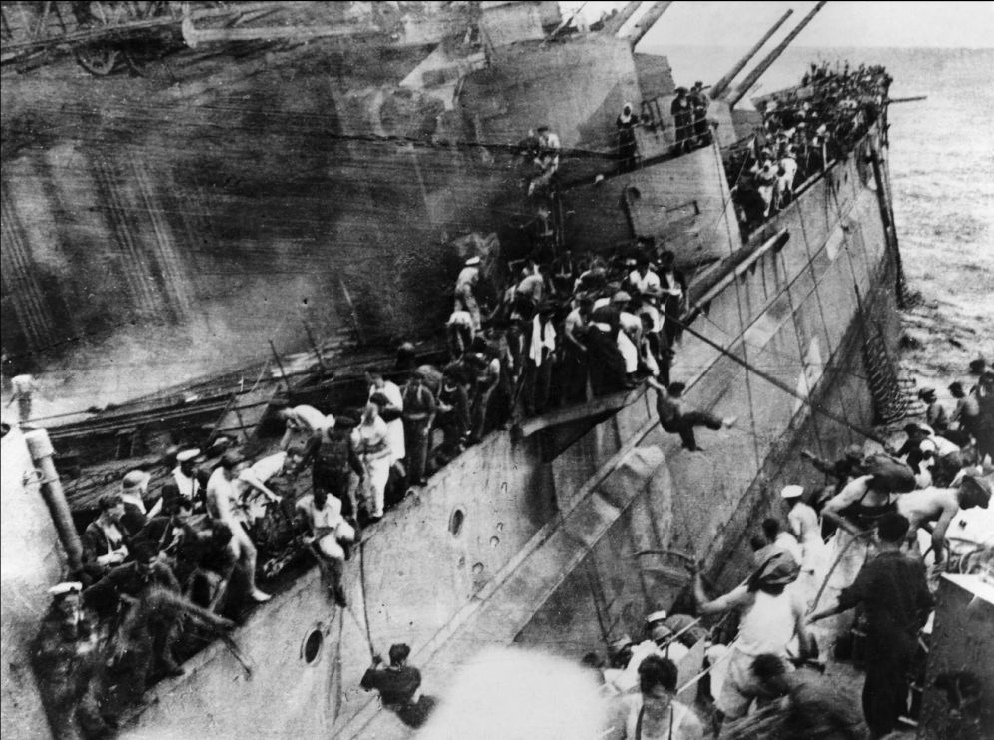
Following service over China, where it conducted the first ever trans-
Nells later participated in the massed bombing raids on Darwin in northern Australia,
as part of Japanese preparations to invade. By the beginning of 1943, the Nell
was relegated to secondary duties, including bomber training and maritime patrol,
with some aircraft fitted out with early Japanese anti-
